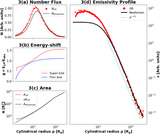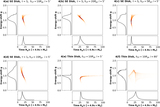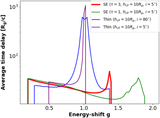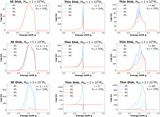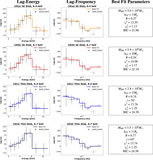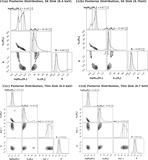Image Details
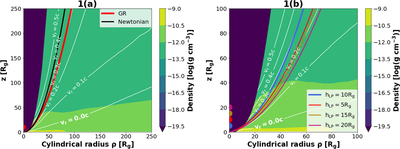
Caption: Figure 1.
The corona reflection geometry for the simulated super-Eddington disk. The x-axis is the cylindrical radius ρ and the y-axis is the vertical height z. The background color depicts the density profile of the disk. The jet is illustrated as the dark blue region around the pole, which is assumed to be optically thin. The wind closer to the pole has a lower density and moves faster, with the white lines showing contours of constant vr. We place an artificial corona at some height hLP and calculate the reflection surface of the coronal emission as the electron-scattering photosphere with a certain Thompson optical depth τ. (a) Comparison between the GR and the Newtonian reflection surface: for hLP = 10 Rg and τ = 3, the thick red curve shows the reflection surface calculated using rigorous GR ray tracing, while the thick black curve shows the reflection surface calculated using Newtonian calculation. (b) Reflection surfaces for different hLP: the red, thick curve is the same as the reflection surface in Figure 1 with hLP = 10 Rg, while the thin curves show the GR reflection surfaces when the lamppost corona is placed at different hLP. It can be seen that the coronal reflection surface is not sensitive to hLP.
Copyright and Terms & Conditions
© 2022. The Author(s). Published by the American Astronomical Society.



